Red Dwarf‘s “Back to Reality” (RX: 5-6/12/91), befitting its story, has something of a dual nature. In many ways, it’s a bold, unusual episode, pushing Red Dwarf to places it had never been before. In other ways, it’s just the natural conclusion to themes which had been present in the show from the very beginning. It’s not like one of the best sitcom episodes of the 90s sprung out of the television without warning.
Nevertheless, perhaps more than any other episode of Red Dwarf, it absolutely commits to its central idea. Seven minutes in, our crew are dead, and thrown into their nightmare. And one thing which makes it feel unlike any other episode is how few of the usual standing sets it uses. Just Starbug. The rest of our familiar, friendly haunts are nowhere to be seen.
Which presents the show with an interesting production problem. At the end of the series1, Production Designer Mel Bibby suddenly has to pull out a brand new bunch of sets, just for a single episode. From scratch.
Except… not really from scratch at all. A year after the episode aired, Mel Bibby had this to say in the pages of Red Dwarf Smegazine:
Although many viewers may not have realised it, “Back to Reality” also had a strong connection to an earlier episode. Bibby explains: “If you look carefully, you’ll see that “Holoship” has the same set. We started off with “Holoship”, making it look all crisp and clean and white, but when we did “Back to Reality” – where we put the machine in front of where they’re all seated – the backing is “Holoship” backing. It’s completely repainted, with a lot of machinery put in, as opposed to windows. The corridors were completely revamped and used again too.”
“One of the things you learn doing Red Dwarf is that you can actually use a lot of the scenery you’re building at the same time. You just give it a repaint, slap a few mouldings on and reshape it, and you can get away with it as another ship.”
– “Corridors, Consoles and Cockpits”, Red Dwarf Smegazine, March 1993
“Holoship” (RX: 14-15/11/91), eh? Let’s take a look.
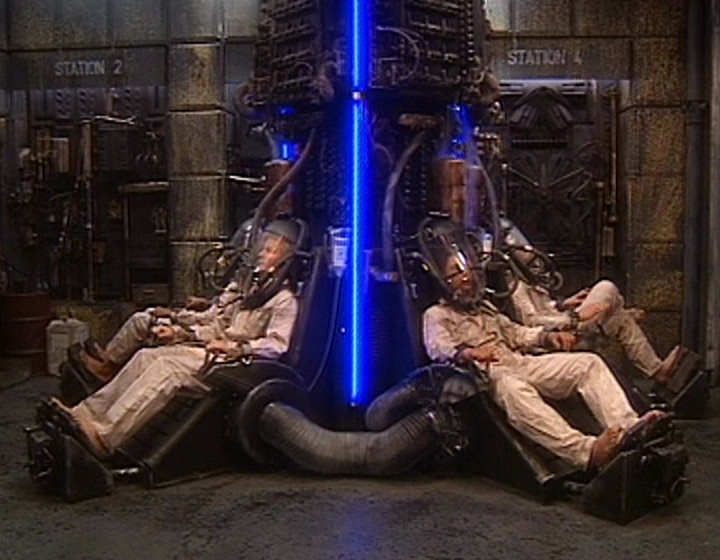
Back to Reality
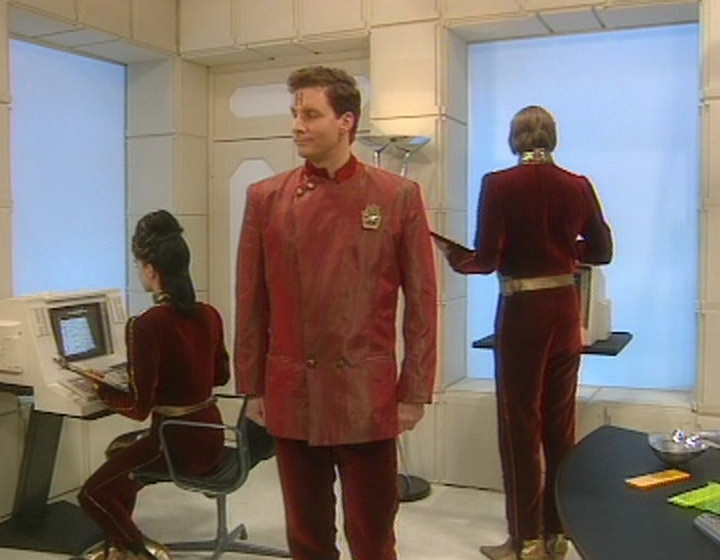
Holoship
Indeed, this is exactly as Mel Bibby describes – the AR set in “Back to Reality” is clearly the same basic set as the bridge in “Holoship”, dirtied down and with a load of machinery bunged in.
Well, I say the bridge in “Holoship”. In fact, the same set is also used for Nirvanah Crane’s bedroom and both exam rooms, just redressed and with different lighting:

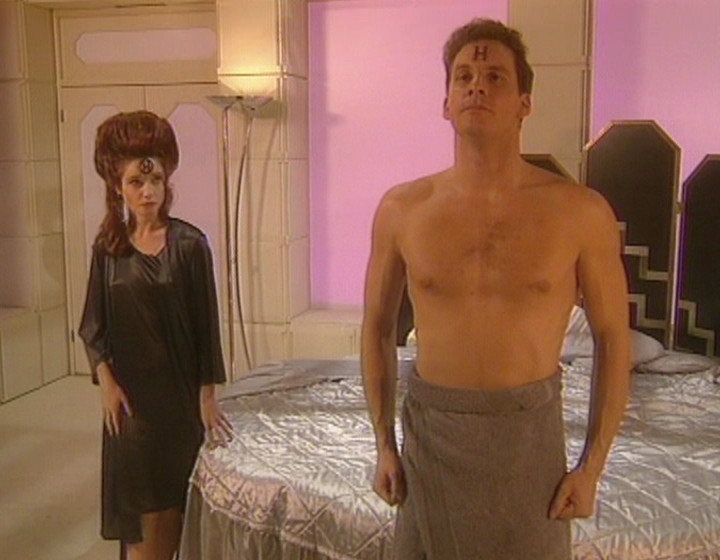
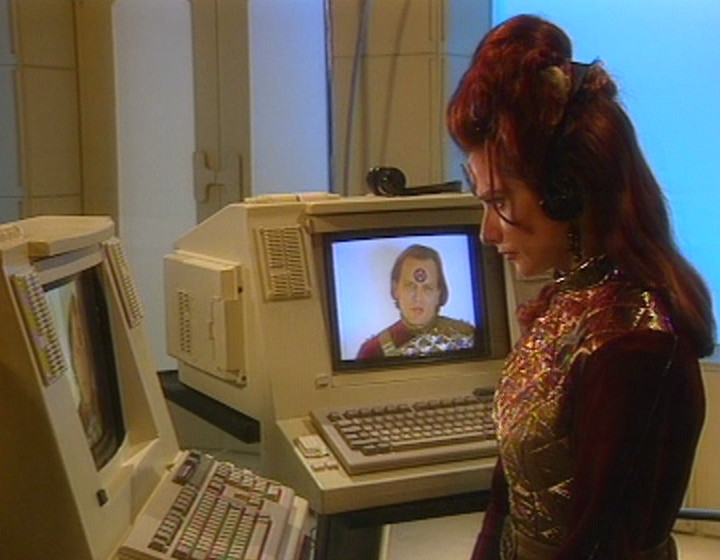
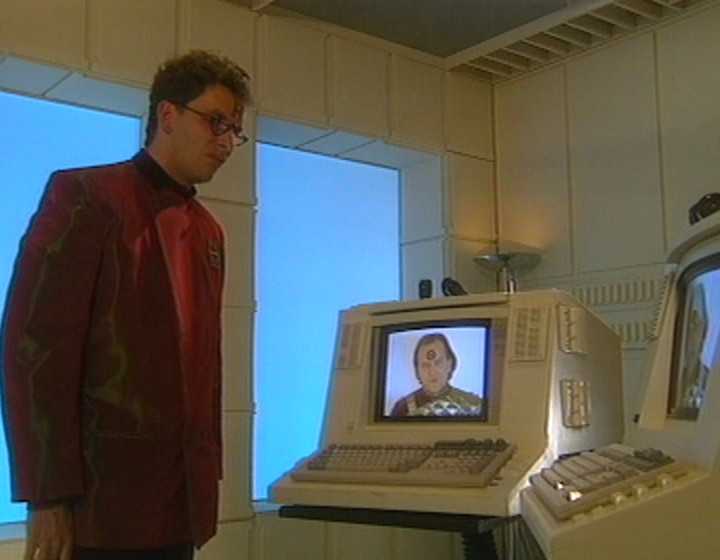
Still, that isn’t the whole deal with the AR suite set in “Back to Reality”. The above reuse from “Holoship” is often mentioned; what’s far less well-known is that the left-hand wall of the set comes from “Quarantine” (RX: 28-29/11/91), similarly dirtied-down and distressed. And here is your proof:
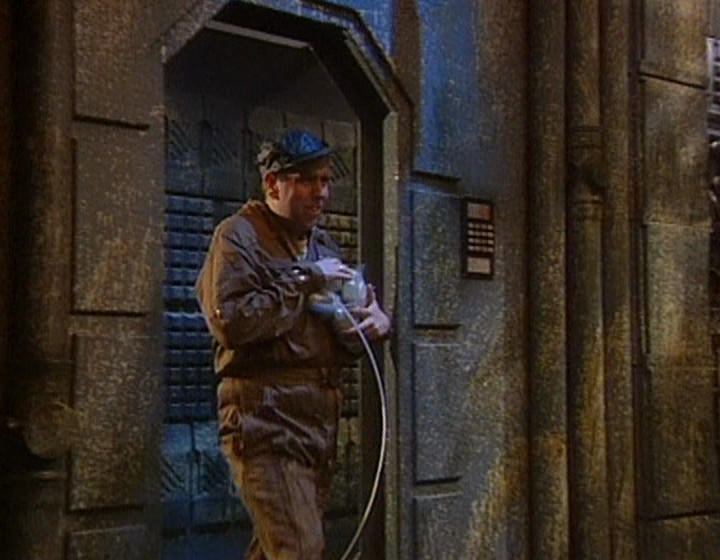
Back to Reality
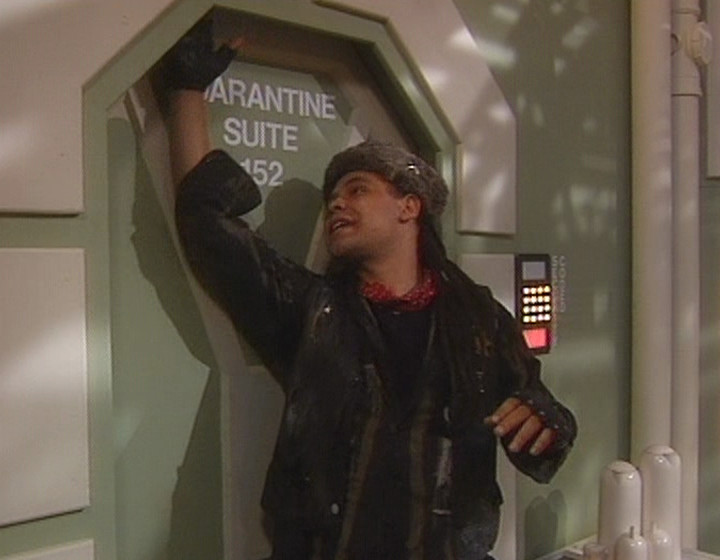
Quarantine
Neither is the AR suite the only set in “Back to Reality” which was taken from earlier in the series. Mel Bibby mentions this in the Smegazine interview; part of the corridor from “Holoship” was also reused:
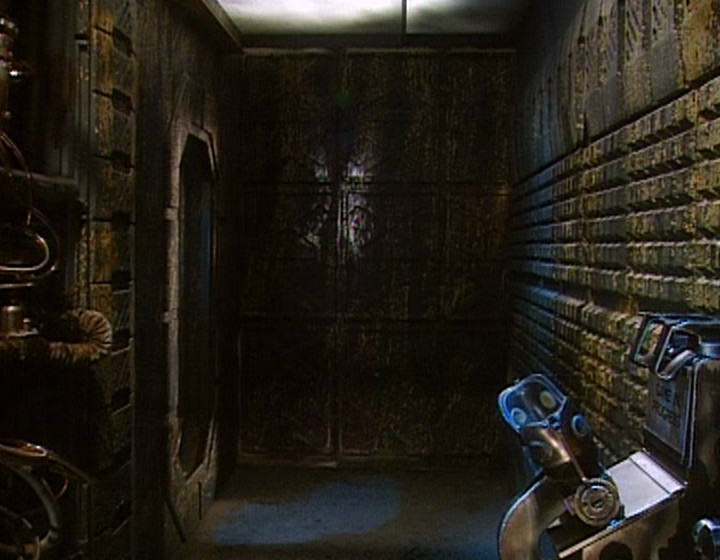
Back to Reality
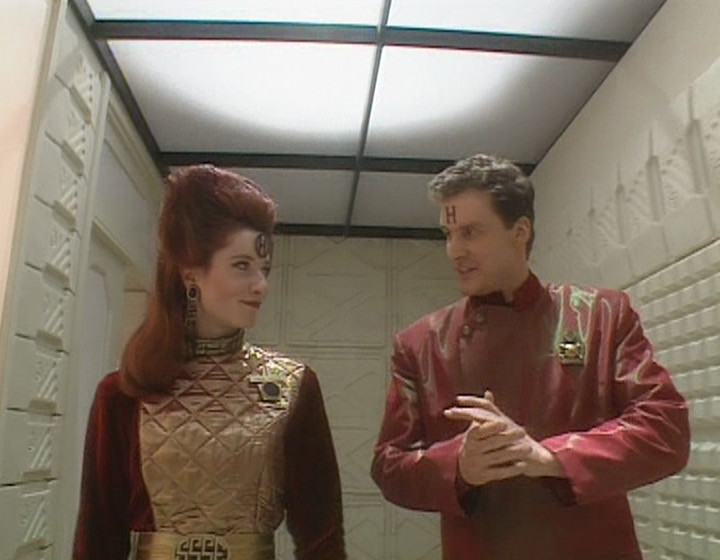
Holoship
As pointed out to me by Andrew Orton2, the best way to get a sense of the scale of the corridor set in “Holoship” is to view the full version of Nirvanah Crane seducing Rimmer. Only a small fraction of the scene made it into the final episode, but the whole thing is present on the deleted scenes of the Series V DVD. It is actually huge for a guest set, and much of it goes unseen in the broadcast show:
All of which leaves us with just one set left: the Recuperation Lounge. It’s a set rarely commented on much as the others, which is perhaps a little surprising. Because we’ve seen the vast majority of this set before too. Take a look at “The Inquisitor” (RX: 7-8/11/91):
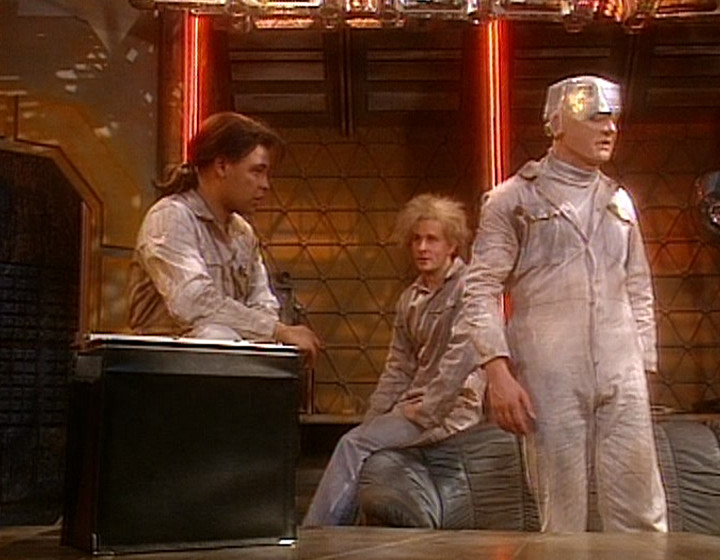
Back to Reality
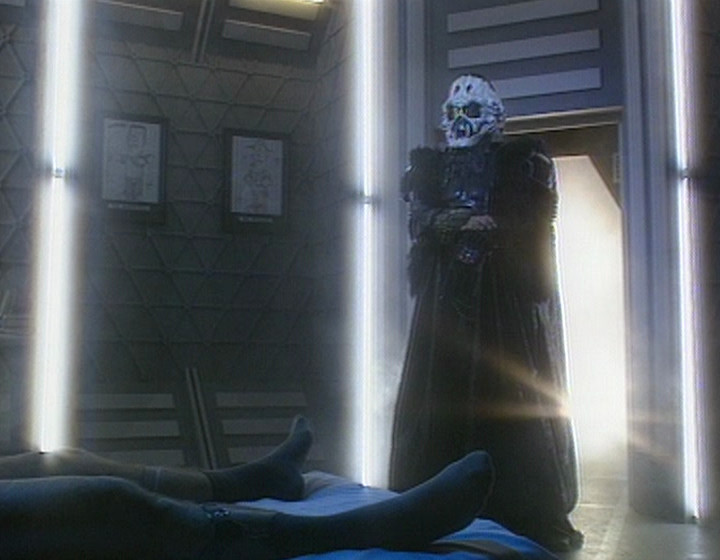
The Inquisitor
Yes, it’s Thomas Allman’s bedroom. Different lighting, a different door, but pretty much the same set.
And that’s how Mel Bibby put together an entirely new series of sets for “Back to Reality”, based on whatever was lying around Shepperton after five weeks of production, without making that look in any way obvious. Unless you’ve overwatched the show to the point of oblivion for three decades, and then decided to write a load of silly articles detailing the sets in Red Dwarf. But who would bother doing something like that?
As for an in-universe explanation for all this, it’s simple, isn’t it? The events of “Back to Reality” are a group hallucination; Leisure World International is simply based on the crew’s memories of Red Dwarf, and more specifically Rimmer’s memories of his time on the Holoship.
And why does it focus so much on Rimmer’s memories? Because he’s the one with the most neuroses the Despair Squid can feed off.
LISTER: What? We would have really killed ourselves?!
KRYTEN: Of course! The hallucinations were designed to induce despair. To attack the very things we each consider quintessential to our self-esteem.
Rimmer’s despair is closer to the surface than the rest of the gang. Of course his memories would influence the group hallucination the most. And very specifically, his recent horrible experience on the Holoship.
God, Red Dwarf fans are the worst.
Yes, “Back to Reality” was not only transmitted last, but recorded last too. ↩
Check out his CG renders of the Red Dwarf sets. Lovely. ↩
